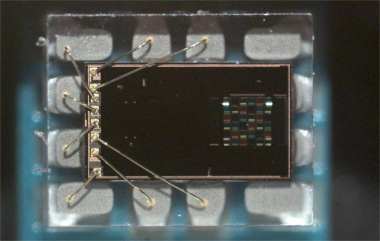
With the continuous advancement of technology, electronic devices are becoming increasingly intelligent. In this process, the Ambient Light Sensor plays a crucial role as an important electronic component. This article will introduce the definition, working principle, characteristics and advantages, applications, and more about Ambient Light Sensors in the electronic components industry.
Catalog
I. What is an Ambient Light Sensor?
IV. Characteristics & Advantages
I. What is an Ambient Light Sensor?
An Ambient Light Sensor is a component found in smartphones, notebooks, other mobile devices, automotive displays, and LCD TVs. It is a photodetector used to sense the ambient light present and adjust the device's screen brightness accordingly. This prevents the screen from being too bright in dark environments or too dim when used outdoors during the daytime, thereby extending the battery life of the device.
II. Working Principle
Ambient Light Sensors utilize photosensitive components or photodiodes to sense the ambient light intensity. When the ambient light changes, the sensor converts this change into an electrical signal and transmits it to the device's control system. The control system adjusts the device's brightness level based on the received signal to adapt to different lighting conditions.
III. Types
· Light Dependent Resistor (LDR): Based on the principle of the resistance of photosensitive materials varying with light intensity, commonly used in low-cost ambient light sensors.
· Photodiode: Utilizes the photovoltaic effect of PN junctions, providing fast response times and higher sensitivity.
· Phototransistor: Modulates the photocurrent when light is incident on the base, commonly used in high-performance ambient light sensors.
IV. Characteristics & Advantages
· Intelligent Adjustment: Ambient Light Sensors intelligently perceive changes in light and automatically adjust device brightness, ensuring users enjoy a comfortable visual experience in various environments.
· Energy Efficiency: By automatically adjusting device brightness, Ambient Light Sensors effectively conserve energy, reduce consumption, and contribute to environmental protection.
· User-Friendly: Ambient Light Sensors make devices more intelligent, eliminating the need for manual brightness adjustments, greatly enhancing usability and comfort.
V. Applications
Ambient Light Sensors have widespread applications in various electronic devices, including:
· Smartphones and Tablets: Used to automatically adjust screen brightness, providing optimal visual effects for users indoors and outdoors.
· Laptops: In laptops, Ambient Light Sensors can adjust the brightness of the keyboard backlight according to changes in ambient light, enhancing the user experience.
· Automotive Displays: Ambient Light Sensors are also applied to displays in cars, adjusting screen brightness based on changes in interior and exterior lighting, thereby improving driving safety.
VI. Conclusion
As an essential component of the electronic components industry, Ambient Light Sensors provide users with a more comfortable and convenient experience by intelligently adjusting device brightness. With the continuous development of smart technology, the application of Ambient Light Sensors will continue to expand, bringing more convenience and enjoyment to people's lives.




